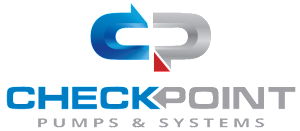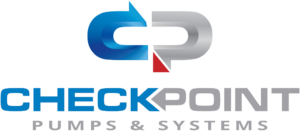7 Essential Tips for Choosing the Right Diaphragm Pump for Your Business Needs
Choosing the right diaphragm pump for your business needs can be a daunting task, especially with the numerous options available on the market today. Diaphragm pumps are essential for various applications due to their unique ability to handle a wide range of fluids, including corrosive and viscous materials. However, selecting the appropriate model requires careful consideration of several factors such as flow rate, pressure requirements, and compatibility with the fluids being pumped. In this guide, we will explore seven essential tips to help you navigate the complexities of diaphragm pump selection. Whether you are in the food and beverage industry, chemical processing, or wastewater treatment, understanding these key aspects will empower you to make an informed decision that enhances your operational efficiency and meets regulatory standards. Join us as we delve into the critical elements that influence your diaphragm pump choice, ensuring it aligns perfectly with your business objectives.

Understanding Different Types of Diaphragm Pumps for Specific Applications
When selecting the right diaphragm pump for your specific applications, understanding the various types available is crucial. Diaphragm pumps are versatile and can be categorized based on their operating principles and intended uses. For instance, air-operated diaphragm pumps are renowned for their ability to handle abrasive and viscous fluids, making them ideal for industrial settings. On the other hand, electric diaphragm pumps are commonly used in medical applications, such as laboratory dosing systems, where precision and reliability are paramount.
Different diaphragm pumps also cater to unique characteristics needed in specialized fields. For instance, single-use diaphragm pumps have recently gained traction in the biopharmaceutical sector, facilitating efficient drug development processes without contamination risks. Additionally, piezoelectric microfluidic pumps emerge as a cutting-edge solution for implantable medical devices due to their compact design and high precision. Understanding these distinctions will empower businesses to choose the most suitable diaphragm pump that aligns with their operational needs and application requirements.
Key Factors to Consider When Selecting a Diaphragm Pump for Your Business
When selecting the right diaphragm pump for your business needs, several key factors come into play. First and foremost, consider the specific requirements of the fluids you will be handling. Different diaphragm pumps are designed for varying applications, and understanding the chemical compatibility, viscosity, and temperature range of your fluids is critical. For instance, some pumps feature a triple diaphragm design to ensure safe and efficient handling of chemically aggressive substances, which can significantly enhance operational reliability.
Another essential aspect to assess is the maintenance needs of the pump. A pump with low maintenance requirements can save your business time and money in the long run. Innovations in pump design, such as integrated maintenance-free gearboxes and simplified control panels, can limit downtime and boost productivity. Additionally, design features that enhance hygiene are crucial for industries like food and pharmaceuticals, where contamination must be strictly avoided. Always evaluate the total cost of ownership, factoring in not just the purchase price but the ongoing maintenance and operational costs to ensure you make the most informed decision for your business.

Comparing Electric vs. Pneumatic Diaphragm Pumps: Which is Right for You?
When considering diaphragm pumps for your business, one of the key decisions is whether to opt for electric or pneumatic models. Electric diaphragm pumps are known for their efficiency and lower operational costs. According to a 2021 report by the National Association of Pump Manufacturers, electric diaphragm pumps can achieve energy savings of up to 30% compared to their pneumatic counterparts. This efficiency makes them an attractive choice for businesses with a steady flow requirement in environments such as food processing or wastewater management.
On the other hand, pneumatic diaphragm pumps offer certain advantages that may align better with specific applications. They are particularly well-suited for hazardous or remote settings where electrical sources may be unreliable or unsafe. A study from the Global Diaphragm Pump Market Outlook in 2022 highlighted that pneumatic pumps are favored for their durability and capability to handle abrasive fluids, making them ideal for chemical processing industries. Ultimately, the choice between electric and pneumatic diaphragm pumps will depend on factors such as the nature of the fluid being transferred, operational environment, and energy efficiency requirements unique to your business.
7 Essential Tips for Choosing the Right Diaphragm Pump for Your Business Needs
| Feature | Electric Diaphragm Pump | Pneumatic Diaphragm Pump |
|---|---|---|
| Power Source | Electricity | Compressed Air |
| Efficiency | High | Moderate |
| Maintenance | Low | Moderate to High |
| Noise Level | Low | High |
| Fluid Compatibility | Wide Range | Limited |
| Portability | Moderate | High |
| Initial Cost | Higher | Lower |
Maintenance and Durability: Ensuring Longevity in Your Diaphragm Pump Choice
When selecting a diaphragm pump for your business, maintenance and durability should be at the forefront of your decision-making process. A well-maintained diaphragm pump can greatly enhance operational efficiency and reduce long-term costs. To ensure longevity, it’s important to choose a model with replaceable elastomers and easy access to components for servicing. This not only aids in repair but also minimizes downtime, keeping your business running smoothly.

Investing in a high-quality diaphragm pump that is designed for durability can pay off significantly. Look for features such as corrosion-resistant materials and robust construction that can withstand the demands of your application. Regular maintenance practices, like routine inspection and timely replacement of worn parts, will further extend the lifespan of your pump. Additionally, training your staff on proper pump usage and care can prevent unnecessary wear and tear, ensuring that your equipment remains in optimal working condition for years to come.
Cost vs. Performance: Evaluating Your Investment in a Diaphragm Pump
When selecting a diaphragm pump for your business, the interplay between cost and performance is crucial. Investing in a diaphragm pump isn't just about the initial price tag; it’s about the overall value it brings to your operations. A cheaper pump may seem attractive at first, but if it underperforms or requires frequent repairs, the long-term costs can quickly accumulate. Businesses must assess their specific needs, including the type of fluids being pumped, the required flow rate, and the operating environment, to determine which model delivers the best performance for their unique circumstances.
Evaluating the right diaphragm pump involves considering not only the upfront costs but also maintenance fees, energy consumption, and the pump's lifespan. A high-quality pump may cost more initially, but its durability and efficiency can lead to significant savings over time. Additionally, consider how well the pump integrates with your current systems and whether it meets regulatory requirements. By balancing cost with performance metrics, businesses can make an informed decision that aligns with their operational goals and budget constraints, ensuring they choose a diaphragm pump that drives productivity without compromising financial health.
Cost vs. Performance: Evaluating Your Investment in a Diaphragm Pump

Whether your solution requires a single pumping application or an expansive engineered system,
CheckPoint is committed to becoming your partner in excellence.




